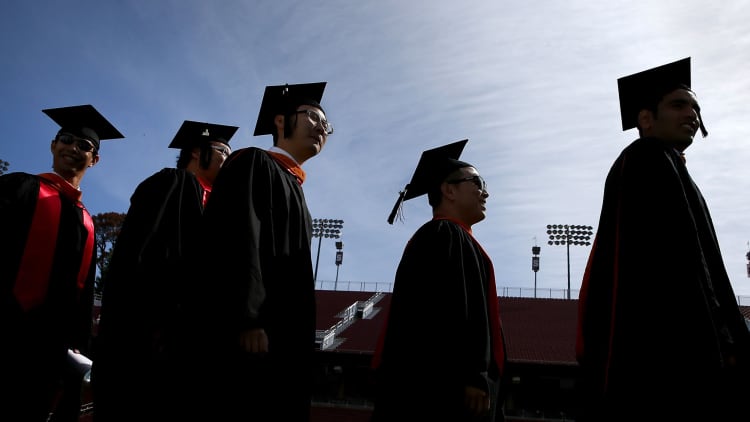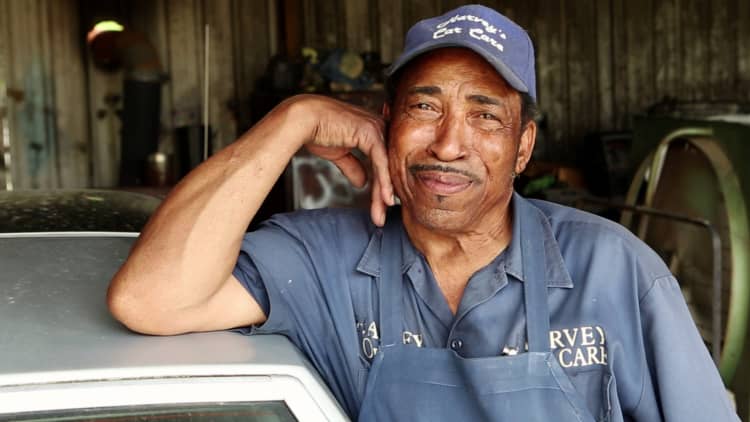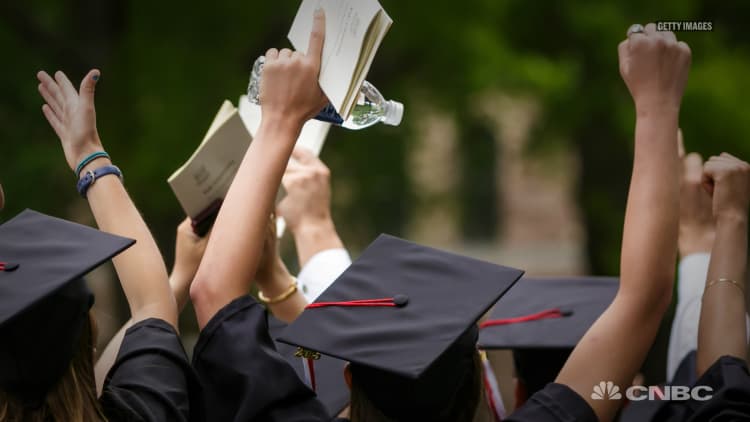The Trump administration will be taking aim at affirmative action programs it believes "discriminate against white applicants," reports The New York Times. But if the Justice Department blames affirmative action for the fact that it's difficult to get into a selective college, its outrage may be misplaced. Undergraduate populations at top schools are not that diverse. In fact, they are strikingly homogeneous: Largely upper-middle-class or rich.
In short, it's wealthy kids, not minorities, who are disproportionately represented at colleges, and elite institutions especially.
"At 38 colleges in America, including five in the Ivy League — Dartmouth, Princeton, Yale, Penn and Brown — more students came from the top one percent of the income scale than from the entire bottom 60 percent," reports The New York Times. It also points out that, at every one of the top 65 U.S. universities, the median parent income is over $100,000. That figure ranges from $272,000 at Washington University in St. Louis to $104,900 at UCLA.
That's why Richard V. Reeves, author of the new book "Dream Hoarders" and a senior fellow in Economic Studies and co-director of the Center on Children and Families at the Brookings Institute, tells CNBC Make It that "the affirmative action we should be most worried about is the one for legacies."
He argues that the preferences given to the children of alumni, as well as the other ways wealthier families elbow out competitors to make room for their own kids amounts to "cheating."
"About half of the students at the most selective colleges, around 480 institutions, come from the upper-middle class. The more selective the college, the greater its dominance," writes Reeves in "Dream Hoarders."
Chart reprinted with permission from "Dream Hoarders" by Richard V. Reeves (Brookings Institution Press, 2017).
In one famous instance, resurfaced this week by Vox and originally put forward in Daniel Golden's 2007 book "The Price of Admission," Jared Kushner's wealthy father pulled every string he could reach to get his son into Harvard: He called two senators to whom he had donated to have them call the Ivy League school on his son's behalf, and he directly pledged a gift of $2.5 million.
On his own merits, Jared would not have gotten in, since he lacked both top grades and SAT scores: "Margot Krebs, who was director of Frisch's college preparatory program at the time, said, 'Jared was certainly not anywhere near the top of his class,'" Golden recounts.
Abigail Fisher, who famously sued the University of Texas-Austin for race-based discrimination, was actually shown to have been bumped out of contention not by affirmative action candidates but by other white students.
In her suit, Fisher maintained that she was passed over for admission while others with worse grades were let in. But investigative journalist Nikole Hannah-Jones pointed out that the vast majority of those students who succeeded where Fisher failed were also Caucasian.
"It's true that the university, for whatever reason, offered provisional admission to some students with lower test scores and grades than Fisher," Hannah-Jones writes. "Five of those students were black or Latino. Forty-two were white." She adds that there were "168 black and Latino students with grades as good as or better than Fisher's who were also denied entry into the university that year."
In 2016, the Supreme Court ruled in favor of the University of Texas and against Fisher.

UT-Austin's undergraduate student body is less than 4 percent black and 20 percent Hispanic, and other elite schools, both public and private, have similar make ups. At Harvard, for example, African-Americans make up only six percent of the undergraduate population. Hispanic students make up nine percent. The American population at large is about 12.5 percent black and 16 percent Hispanic / Latino.
By contrast, 67 percent of Harvard's students come from America's wealthiest 20 percent, and a full 15 percent come from just America's top one percent.
This matters a great deal, because access to elite universities is one of the primary ways the upper-middle class and upper class pass on their advantages. Reeves writes in "Dream Hoarders" that, in America, "the children and grandchildren of wealthy people end up wealthy themselves, but largely by getting a better education than through direct inheritance: because of B.A.s rather than bequests."
Reeves suggests parents ask ourselves, "What's acceptable in a society that prides itself on fairness?" Especially given that, as he tells CNBC Make It, "if you have a society where the upper-middle class perpetuates itself one generation to the next, you cease to be America."
Like this story? Like CNBC Make It on Facebook.
Don't miss:




